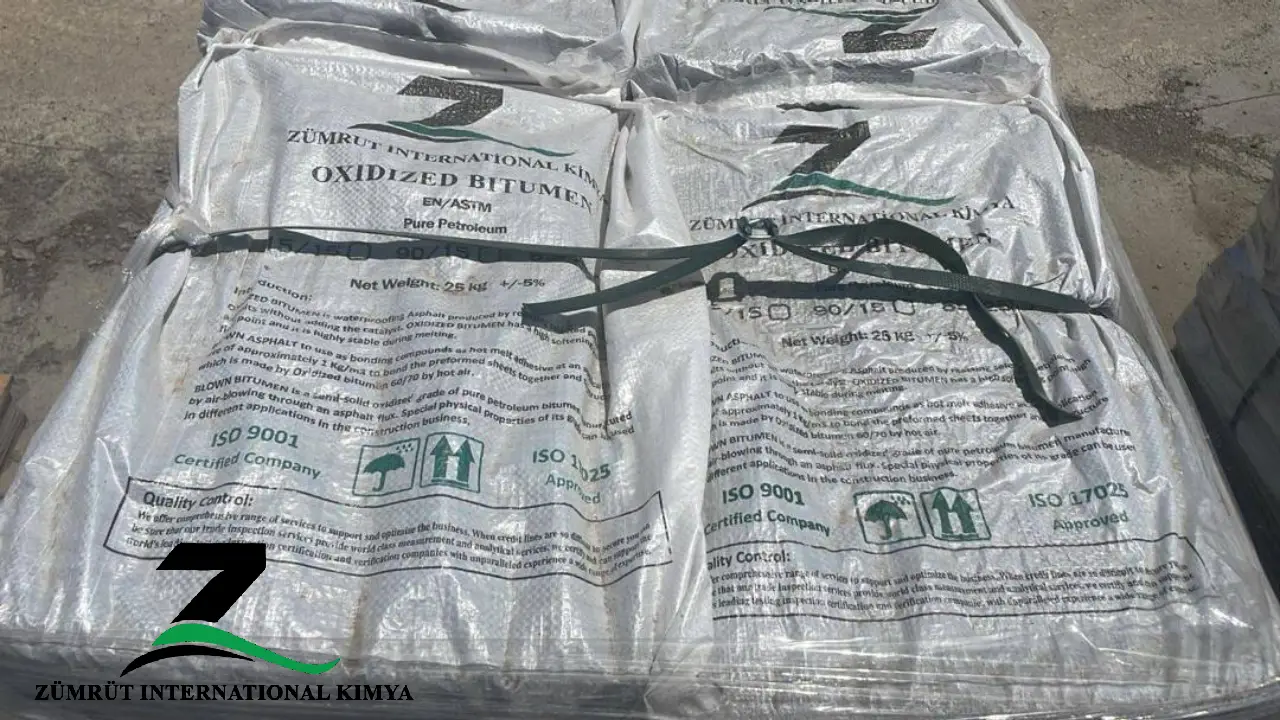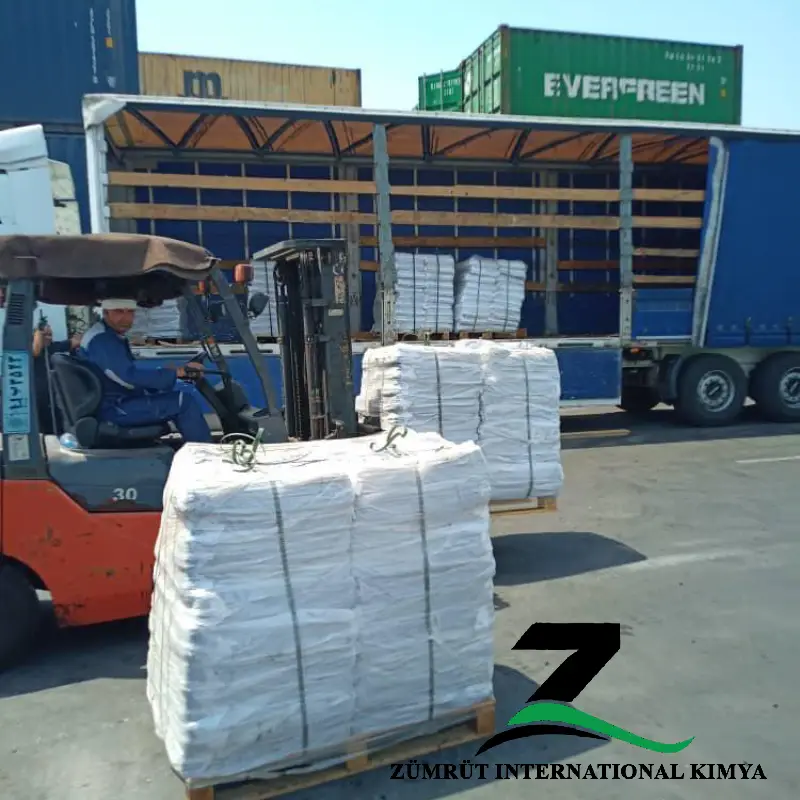
Blown Asphalt 85/25 Definition
Oxidized Bitumen 85/25 is a type of bitumen binder used in various construction applications. Here’s a breakdown of its definition:
- Composition: Blown Asphalt 85/25 is derived from petroleum and undergoes an oxidation process to modify its properties. It contains hydrocarbons and additives that enhance its performance and durability.
- Characteristics: The “85/25” designation refers to its penetration and softening point characteristics:
– “85” indicates the penetration value of the bitumen, measured in tenths of a millimeter (0.1 mm), at a standard temperature of 25°C. A lower penetration value indicates a harder bitumen.
– “25” denotes the softening point of the bitumen, measured in degrees Celsius (°C). The softening point represents the temperature at which the bitumen softens under specified conditions. A higher softening point indicates greater resistance to deformation at high temperatures. - Properties: Blown Asphalt 85/25 typically exhibits increased viscosity, higher softening point, and improved resistance to aging, weathering, and deformation compared to unmodified bitumen. These properties make it suitable for various construction applications where durability and weather resistance are essential.
Oxidized Bitumen 85/25 Technical Details
This grade of Bitumen has higher penetration Although its softening point is lower than grade 90/15 In addition to penetration testing, there are tests used to determine Oxidized bitumen 85/25, including viscosity, shape, and heat loss, and flash point. and the most important items are penetration and softening point.
According to the ASTM D36 method, the softening point of this grade of bitumen is between 80 and 90 ° C and the flash point is 225 ° C.
Oxidized Bitumen 85/25 Applications
Blown Asphalt 85/25 finds numerous applications in construction and civil engineering projects due to its specific properties and versatility. Some common applications include:
- Road Construction: Used as a binder in asphalt mixtures for road paving, Blown Asphalt 85/25 enhances the durability and weather resistance of pavements, resulting in smoother and longer-lasting road surfaces.
- Pavement Maintenance: Applied as crack sealants or joint fillers, Oxidized Bitumen 85/25 helps prevent water penetration and reduces pavement deterioration caused by weather and traffic, extending the lifespan of pavements.
- Waterproofing: Used in waterproofing membranes and coatings for roofs, foundations, basements, and tunnels, it forms a robust barrier against moisture, protecting structures from water damage and increasing their longevity.
- Expansion Joint Filling: Employed for filling expansion joints in concrete structures like bridges, highways, and parking decks, it accommodates movement due to temperature changes and prevents water infiltration, preventing structural damage.
- Roofing Materials: Incorporated into built-up roofing systems (BUR) and modified bitumen membranes, it provides waterproofing and weatherproofing properties for flat and low-sloped roofs, safeguarding buildings from leaks and damage.
- Industrial Coatings: Mixed with other materials, it is used in industrial coatings for corrosion protection of metal surfaces, anti-rust coatings for pipelines and storage tanks, and pavement preservation treatments for industrial facilities.
- Adhesives and Sealants: As a binder in adhesives and sealants, it ensures strong and durable bonds between construction materials like asphalt shingles, roofing felts, and waterproofing membranes.
Unique advantage of Oxidized Bitumen 85/25
- Temperature Stability: With a softening point around 85°C and a moderate penetration rate, Oxidized Bitumen 85/25 can withstand temperature fluctuations without becoming brittle in colder conditions or overly soft in warm conditions. This makes it particularly suitable for climates with varied temperatures.
- Strong Waterproofing Capabilities: Its dense, oxidation-hardened structure provides excellent water resistance, making it ideal for waterproofing applications, including roofing and foundation membranes.
- Superior Adhesion: Unlike some harder grades of bitumen, Oxidized Bitumen 85/25 maintains excellent adhesion properties, allowing it to bond strongly to surfaces such as concrete, metals, and wood. This makes it a preferred material for applications like pipe coating and construction where secure adhesion is critical.
- Chemical Stability and Durability: The oxidation process enhances the bitumen’s resistance to environmental and chemical degradation, giving it a long-lasting performance even in harsh outdoor environments.
Packing of Oxidized Bitumen 85/25
Meltable Polyamide Bags in (20&25 Kg)
Carton Box in (20,25&40 Kg)
Kraft Bags in (20,25&40 Kg)
Blocks in (20,25&40 Kg)
Drums in (20&25 Kg)
Protection and Storage of Oxidized Bitumen 85/25
Protection
- Avoid Moisture Exposure: Oxidized bitumen is sensitive to moisture, which can alter its properties. Ensure that the bitumen is kept in a dry environment.
- Protection from Contaminants: Keep the material away from dirt, dust, and other contaminants. Use clean, sealed containers to store the bitumen when not in use.
- Temperature Control: Bitumen should be protected from extreme temperature variations. Prolonged exposure to high temperatures can cause it to degrade, while freezing temperatures can make it brittle. It is best stored in environments with moderate temperatures.
- UV Protection: Prolonged exposure to direct sunlight can degrade the quality of oxidized bitumen. Store it in shaded areas or use protective coverings to shield it from ultraviolet (UV) radiation.
- Handling Precautions: When handling oxidized bitumen, use appropriate protective gear, including gloves and masks, to avoid skin contact and inhalation of fumes, especially when heated.
Storage
- Proper Containers: Store oxidized bitumen 85/25 in sealed, corrosion-resistant drums or containers. These should be airtight to prevent oxidation and contamination.
- Storage Temperature: It is essential to maintain a storage temperature below 200°C. This will prevent excessive hardening or changes in the bitumen’s characteristics. In colder climates, heating the storage area slightly can prevent the bitumen from becoming too rigid for use.
- Ventilation: Ensure that storage areas are well-ventilated to prevent the buildup of fumes, especially if the bitumen is heated or stored at elevated temperatures.
- Stacking: If storing the bitumen in drums or large containers, stack them properly to avoid any risk of collapse. Avoid placing them directly on the ground to prevent moisture absorption from the floor.
- Regular Inspection: Routinely inspect the containers and storage conditions to ensure there are no leaks or contamination. Regular checks help prevent the degradation of the material and ensure its longevity.
Health & Safety
Workers should wear protective masks, gloves, and goggles during application. The asphalt can be removed from equipment and tools with kerosene or gasoline. Care should be taken when heating Oxidized Bitumen 85/25 to avoid overheating. For Health and Safety information, please make reference to the relevant MSDS.

Technical Advantages of Blown Asphalt 85/25
Oxidized Bitumen 85/25 offers several technical advantages due to its specific properties and characteristics:
- Enhanced Durability: The oxidation process increases the molecular weight and viscosity of the bitumen, resulting in improved resistance to aging, weathering, and deformation under traffic loads. This enhances the longevity and performance of pavements and other construction applications.
- Higher Softening Point: Oxidized Bitumen 85/25 has a higher softening point compared to unmodified bitumen, making it more resistant to deformation at high temperatures. This property helps prevent softening and rutting in hot climates and high-temperature environments.
- Reduced Penetration: The oxidation process reduces the penetration value of the bitumen, indicating a harder and more viscous material. This improves adhesion to aggregate particles and reduces the risk of bleeding or flushing in asphalt pavements, resulting in better overall performance.
- Improved Weather Resistance: Oxidized Bitumen 85/25 forms a tight and durable waterproofing layer when applied to surfaces, making it highly resistant to moisture infiltration and environmental degradation. This makes it suitable for various construction applications requiring weatherproofing and protection against water damage.
- Enhanced Cohesion: The increased viscosity and hardness of oxidized bitumen improve its cohesion and resistance to deformation, resulting in better structural integrity and stability for construction materials and pavements.
- Versatility: Oxidized Bitumen 85/25 can be used in a wide range of construction applications, including road construction, pavement maintenance, waterproofing, roofing, and industrial coatings, due to its adaptability and compatibility with other materials.
Technical Data Sheet of Blown Asphalt 85/25
| Bitumen 85/25 | Test method | Unit | Specification |
| Specific gravity @25/25 C | ASTM D70 | (Kg/m3) | 1.05 approx. |
| Penetration @ 25°c | ASTM D5 | mm/10 | 20/30 |
| Softening point °c | ASTM D36 | °C | 80/90 |
| Ductility @25 °c | ASTM D113 | Cm | 3 min |
| Loss on heating(wt) % | ASTM D6 | Wt. % | 0.2 max |
| Flashpoint c | ASTM D92 | °C | 250 min |
| Solubility is CS2(wt) % | ASTM D4 | Wt. % | 99.5 max |
| Spot test | A.A.S.H.O.T 102 | — | Negative |
Technical Datasheet of Blown Bitumen 85-25



